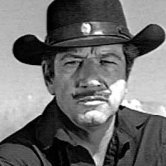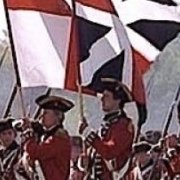

DByrden
Members-
Posts
68 -
Joined
-
Last visited
Profile Information
-
Gender
Male
-
Location
Vienna
Recent Profile Visitors
819 profile views
DByrden's Achievements

New Member (2/9)
50
Reputation
-
I don't have this book, but I'm looking at the sample page in the review. You said the book takes us inside a Hetzer "in superb condition". But that photo does not show a Hetzer. It shows a post-war G13, the vehicle built for Switzerland. Does that matter? If I can immediately see the difference in a tiny photo, then it matters! The two vehicles had different guns. Equipment storage on the inside must have been different, because different armies have different requirements. But I can't give you full details because I can't find a good Hetzer reference - and this book is not one. David
-
Tigers of a version that builds from this kit, did not arrive in Africa until March 1943. David
- 20 replies
-

Tiger I Mid Production w/interior
DByrden replied to BlackMax12's topic in Work in Progress - Armour
Those items were all moved around when the "new turret" was invented. We call it the "Mid" turret now. So, the builds you see online are "Early" Tigers and the way they lay out those items is not relevant. It gets worse. In late 1943 there was a lot of cost-cutting and simplification in Panzer manufacture. Internal storage was a place to cut costs. Furthermore, the feedback coming from the front line troops was saying : don't attach anything to the walls. When we take a hit, it all flies around inside the tank! So, most of the items on the Tiger's turret wall were removed from there and put somewhere else. For example, the large box on the inside right of the wall? It went to the turret floor. The boxes containing spare glass blocks? Moved down to sit on the turret ring. The ammunition bags on the wall? They were hung off the new internal bin on the ring. This new layout was used on the "Late" Tiger as well as the final "Mid" Tigers as represented by this kit. Rye Field simply don't know how thie equipment was stored. They can see that the Late Tiger in Saumur museum doesn't have storage on its walls but they don't know where those items are supposed to be. And, frankly I don't think Rye Field ever got inside that Tiger to find out. David -

Tiger I Mid Production w/interior
DByrden replied to BlackMax12's topic in Work in Progress - Armour
That rack was a factory fit in "early" Tigers and in the first "Mid" Tigers but it was no longer being installed by the end of the "Mid" run, as represented by this kit. The entire interior of the turret had been simplified in about October 1943. Rye Field really don't know the Tiger as well as they pretend to. David -
Well, a year has passed and I've learned a few more things about the Panzer IV. The tank started out with the "Z intercom" but that was replaced by the "Intercom 20" some time in 1943, roughly when Ausf.G production was switching to Ausf.H. So there's no way that the "Z intercom" should be present in this kit. Unfortunately it is. Part "D1" is the old intercom switch box. Step 15 of the instructions tells you to put it on the side wall. It should not be there. Furthermore: the box that replaced it, the amplifier of the new intercom, should be in the kit. It should be attached to the radio rack. It's not there in the instructions and I don't know if it's even on the sprues. Trumpeter seem to have equipped their Ausf.J in the style of an Ausf.G. Then I looked in the turret for the headphone socket boxes. An older Panzer IV would have a single one, but with the new intercom there should be two. Do Trumpeter give you one or two? Alas they don't give you ANY. While we're talking about the radios: the kit provides a full complement for a standard Panzer IV, namely, two receivers and a transmitter. But in most cases the tank would carry only a single receiver. The extra receiver was for platoon and company leaders - who needed to listen to higher command. So, for most of the decals in this kit, the lower slot in the radio frame should be empty. David
- 7 replies
-
- Pocketbond
- Panzer IV
-
(and 1 more)
Tagged with:
-
I'm researching the insides of the early Stugs. There's not much information out there concerning versions A to D. May I ask where you got your ideas for your Dragon build? For example, you put an intercom mount in the middle of the rear wall. Did you see that in a photo? David
-
The "E" version had some major changes compared to the earlier versions. You might want to look out for that. I can't find good references for the insides of the previous versions. For example, the Ausf.E had an intercom. So there was an amplifier box on the rear wall. It had space for a complete radio - receiver and transmitter - in both sponsons. A standard Stug would normally have the complete radio in the left sponson. But the photo set you're (probably) looking at is a platoon command vehicle, so its main radio is in the right sponson and the second receiver is in the left. I wrote about the radios in Stugs A to D David
-
The exhausts would belch huge flames which the Russians could see from far off. This why later models of the tank were built with deflectors. But the crews in Russia with their newly invented Tigers had to come up with their own solution. David
-
The basic rule with the Tiger cupola is that one of the visor holes faces directly forwards. So, the hatch ended up 72 degrees from forward. David
-
I don't know what you're building there, but the cupola angle is wrong... David
-
It would be easier to email me! The address is on my pages at TIGER1.INFO David
-
The idler wheel on a Tiger (if that's what you are talking about) was movable to set the track tension. Up to 30 degrees from the vertical, either way. David
-
There's an error in that Tiger kit : it specifies the wrong kind of mantlet for the "A2" decals. Totally my fault. David
-
Those are not new. They've been available for over a decade. At least two model kits have been based on those photos. David






